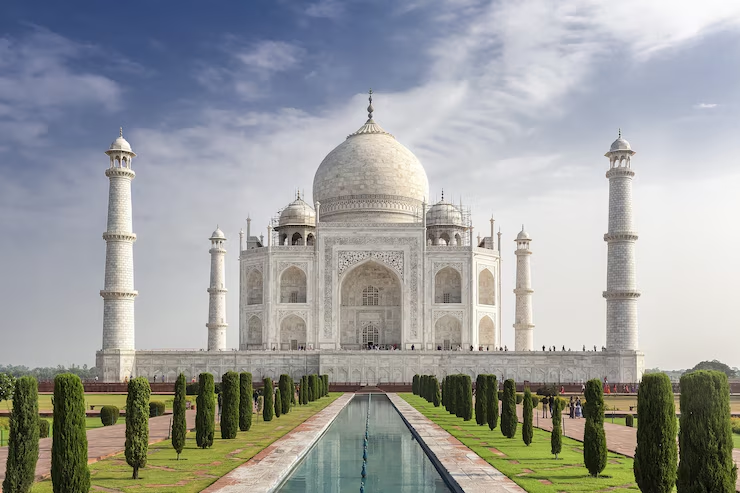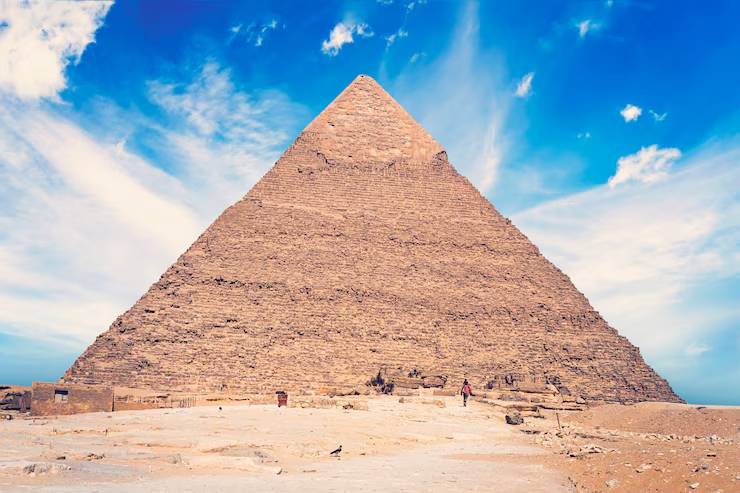Introduction to the 7 Wonders of the World
People always get particularly interested in the 7 Wonders of the World, which is the result of great people’s incredible inventions and buildings as well as their cultural assets. Stemming for the ancient ages, the concept was initially developed by Greek historians who wanted to list outstanding architectural and engineering accomplishments known to the ancient Greeks. The initial list or as it is often called the Seven Wonders of the Ancient World are remarkable constructions like Great Pyramid of Giza, Hanging Garden of Babylon, and the Statue of Zeus at Olympia.
With due course, the concept of 7 Wonders changed, and the contemporary list of New Seven Wonders of the World was conceptualized and developed, which represents the cross-section of different cultures and geographical entities of the world. This modern list developed through an international vote organized by the New7Wonders Foundation consists of mighty structures such as The Great Wall of China, Petra in Jordan, The Taj Mahal in India, among others. These modern marvels were chosen with the following compositions, architectural relevance, cultural influence, and historical value.7 wonders of the world
There is more to these wonders than the size and elegance; it’s the history that lies in the structures. They give that kind of window into what kind of technologies were in existence, what kind of arts were produced and the general culture of the people at various times. In addition to the cultural and historical values or these monuments, they remain one of the major attractions with millions of tourists attending them ever year.
The Ancient Wonders of the World
- The Seven Wonders of the Ancient World are architectural and or engineering marvels that each was a wonder in its own right. One of the new seven wonders is still in existence and this is the pyramids of Giza and this shows the wise engineering of the ancient Egyptians. Built around 2580-2560BC for the Pharaoh Kufu, this wonder is considered a death place and still provokes great attention of scientists due to its precise orientation and the methods of construction.
- The gardens of Babylon are said to have been an astounding creation Even today the existence of these gardens is debated. Originally, purpose of these gardens was to be the residential terraced garden, said to have been constructed by the King Nebuchadnezzar II for his wife Amytis; it was described as the garden in the midst of the barren desert of Mesopotamia with well-developed system of irrigation.
- This was the Statue of Zeus at Olympia by the artist Phidias made circa 435 BC; the statue represented Zeus – the king of the gods – in a large, seated posture. He built it to a height of about 12 meters; and it was of ivory and gold-plated bronze. Located in the Temple of Zeus, this meant it represented Greek religious feelings alongside the artwork that was present.
- The Temple of Artemis at Ephesus that was built around the mid-6th century BCE had a fame as one of the largest and most elaborate. This was a large temple of Artemis which housed highly beautiful marble columns and elaborate sculptures; it served as the focal point of worship and a treat to the contemporary Hellenistic architecture.

- Among the seven, one may recall the Colossus of Rhodes: a statue of the sun god Helios, built between 292 and 280 BCE. It was approximately 33 meters in height which made it one of the prominent statues in the ancient world. Located at the mouth of the harbor of Rhodes it represented the island’s strength and success in overcoming oppression.

- The particular two-storied building was constructed around 280BC and was placed on an island called in the city of Alexandria. It was said to have reached up to one hundred meters and was one of the record-breaking structures that was built by man, acting as a lighthouse to safely guide sailors into the port of Alexandria.

Such archaeological constructs not only proved people’s practical skills and gift in art but also bore social functions in those cultures. They also elicited admiration, and this has left behind effects that are visible to date in the designing of architecture and engineering.7 wonders of the world
The New 7 Wonders of the World
New Seven Wonders of the World is a highly appreciated list created through a poll conducted by the New7Wonders Foundation in 2007 to commemorate some of the wonderful architectures across the world. Besides having an aesthetic value, these wonders are socially and historically relevant as examples of the best human creativity. Every of them has its own wonderful history of the civilization that created it and the story of contemporaneous attempts to save the relics is as inspiring as the history of the creations themselves.7 wonders of the world

- Petra in the kingdom of Jordan with the popular name ‘the Rose City’ because of the color of the rock is an archaeological masterpiece. Situated in Jordan, this city was constructed 2000 years ago in the red rose city and was functional as a trading center by the Nabataeans. Their magnificent rock carved structures and the sophisticated water supply method are the proofs of the people’s creativity. Conservation strategies include combating the continuous losses and finding ways to deal with the effects of tourist activities.

- Christ the Redeemer in Brazil as a sculpture of Jesus Christ facing Rio de Janeiro is considered the symbol of Christianity and peace. This Colossal building was created in 1931 and depicts the figure of Jesus Christ, this was designed out of reinforced concrete and soapstone. It is kept that way through maintenance and restoration works to maintain that elegance.

- The ancient ruins of South American civilizations are the Incan city of Machu Picchu located in Peru, built into the slopes of the Andes Mountains, famous for perfectly joined dry-stone walls. Current management activities in order to preserve the cultural heritage of this site are regulating its access to the tourists and reconstructing the affected buildings.

- Some of the WORLD HERITAGES SITES includes Chichen Itza in Mexico, El Castillo a pyramid. These civilizations are portraying a clear image of how the Mayans were great Astronomers and architects. amelioration measures proposed for the site are aimed at environmental and anthropogenic disturbances.
- Colosseum in Italy is an ever-burning structure of the Roman empire and used to witness gladiatorial fights and other popular mass events. Its construction resembles an ellipse and is constructed with the use of very advanced engineering practices that still amaze historians and tourists. For preservation, works are carried out on maintenance of the structural integrity and the restoration of its archaic elements.

- The Agra Fort in India and the Taj Mahal, a mausoleum constructed by the Mughal Emperor Shah Jahan in memory of his queen Mumtaz Mahal, are excellent illustrations of Mughal style architecture; the edifice is built purely of white marbles with engravings of semi-precious stones. Its beauty can only be threatened by pollution, acid rain and other similar problems that can be solved through conservation projects.

Not only do these New 7 Wonders of the World highlight man’s intellect and architectural skills but are also indicative of the need to return and restore such works for the next generations. Preservation and restoration that consumed by global communities make sure that these wonders remain to be sources of wonder and knowledge to the world.
The Enduring Legacy of the 7 Wonders
It was guarantee that everything remains the same throughout the world and the 7 Wonders of the World have left their impressions on the face of the earth everlastingly. Such sociocultural masterpieces of the work of human mind and talent have significantly impacted on different facets of life such as art, literature and tourism. The teaching and exposition of the seven wonders in countless numbers of artworks from medieval paintings to modern or contemporary movies only go to prove that their appeal and importance is timeless. Stories of these magnificent edifices in the Victorian literature and even the contemporary works are filled with mystery and grandeur that tend to hook the readers of different generations.7 wonders of the world
They have also had a great impact on the 7 Wonders of the world specifically on tourism. Larger boasts like the Great Wall of China or the Pyramids of Giza site generate millions of visits from people yearly, thereby boosting their respective regional markets and promoting the feeling of humanity’s collective history. However, this means increased tourists, and this has the following problems. This is through exerting pressure on such tourism wonders, other factors like degradation of environment and urbanization on these marvels. The dilemma of opening the access and at the same time protecting the objects is one of the biggest challenges that governments and bodies for preservation all over the world consider.7 wonders of the world
Some of the 7 Wonders of the World have remained famous even to this date as a pointer to their importance in the world. They are deafening icons of accomplishment that create feelings of wonderful reverence and appreciation of our past and therefore call for the preservation of arts and culture. Thus, the constant friendly collaboration going on around the world and proper preservation of these magnificent landmarks can help us keep these values alive for people at large in the future.7 wonders of the world




